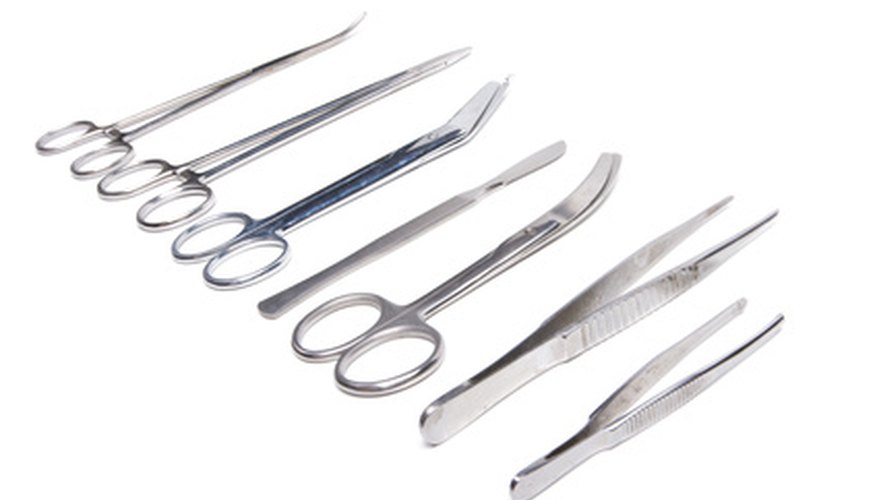Medical professionals use surgical ring cutters to remove finger rings or other metal jewelery in emergency situations. The tool is slightly larger than a pair of nail clippers and most first-responder medical personnel consider it standard equipment. As with any surgical tool, the blade can become dull or contaminated either from use or exposure to patient fluids. Either situation necessitates changing the blade promptly to ensure maximum efficacy and hygiene for the wounded party.
- Medical professionals use surgical ring cutters to remove finger rings or other metal jewelery in emergency situations.
- As with any surgical tool, the blade can become dull or contaminated either from use or exposure to patient fluids.
Apply rubber gloves. The new blade of the ring cutter should be sterile to prevent infection.
Secure the old blade with a pair of tweezers or pliers. This will prevent the damaged blade from accidentally cutting you or someone else.
Unscrew the T handle. It is located on top of the blade and resembles a banana bicycle seat.
Remove the old blade. Be sure to deposit the contaminated or damaged blade immediately into the medical waste receptacle.
Insert the new blade and screw down the T handle to secure the position.
TIP
Always inform the patient of any changes to the process. If you are preparing to use a ring cutter and find the blade needs replacement, explain this to the patient to avoid fear and confusion.
WARNING
Do not tighten the T handle too much when fitting the new blade. Doing so will cause the grip threads to wear down on the T handle.
